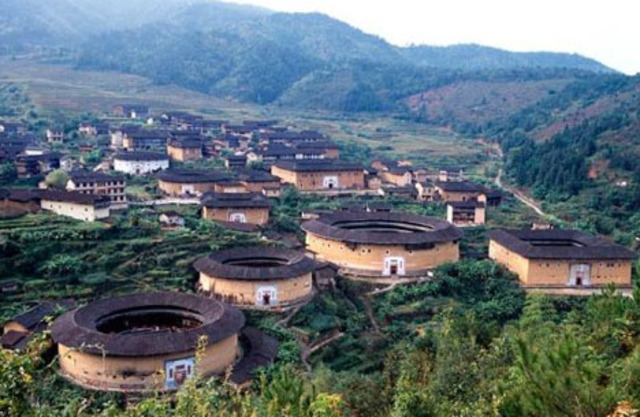Medieval Urban Design Meets Modern Living

Imagine constructing your home not with comfort in mind, but with your very survival. Some such spectacular structures – built of basic necessity – ?still survive in rural China, with walls six feet thick, five stories tall and containing nearly half-million square feet (space to house nearly one hundred families at ones).

Grown out of the need for defensive fortifications, these strange square and round enclaves are as much defensible fortresses as they are self-contained communities. Each contains its own storage spaces – ready in case of siege – for ample supplies of food and weapons, at least in times past. They also house living quarters, religious spaces and other communal places to gather. Ryan Peal recently visited these remote buildings and shot the stunning pictures you see here in the process.

In the spirit of self-preservation out of which these were born, the walls are made of packed earth, brick or stone; the limited entrances (usually a single large door like you might find in a castle) and what windows exist are raised well above the ground level in case of attack. Though they are now not needed for their original purposes, the ways in which these dwellings were constructed still shape how people living in contemporary times within their centuries-old homes.

When we think of people living traditional lives in the present day, images of fairly basic bare-bones buildings come to mind – simple straw huts, bamboo shelters and so forth. Miniature cities like these rarely come to mind, tough we would do well to remember that people have gathered together in micro-societies since the beginning of recorded history. These amazing architectural anomalies bridge a curious gap between or understanding of ancient cultural habitats and modern enclosed urban settlements.
“It was about five or six years ago that I first read about the Hakka Tulou ‘apartments’ in Yongding county, Fujian province,” says the photographer. “And from that moment on, I was completely fixated on visiting and trying to understand more about them.”
“In 2008, UNESCO granted the Tulou ‘apartments’ World Heritage Status. UNESCO cited the buildings as exceptional examples of a building tradition and function exemplifying a particular type of communal living and defensive organization. The Tulou is ‘the most extraordinary type of Chinese rural dwellings’ of the Hakka minority group and other people in the mountainous areas in southwestern Fujian, UNESCO said.”




